
from Spiritual Seeker 77
http://spiritualseeker77.tumblr.com/post/177597685596
from http://spiritualseeker77.tumblr.com/
#spiritual
Holistic healing advice, tips and tricks including mindfulness, meditation, aromatherapy, crystal healing, relaxation, spiritual inspiration and Buddhism put together by lightworker and artist Pixie Copley




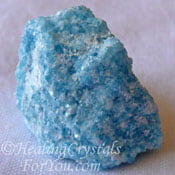
Brucite aids goal setting, helps you to plan new enterprises and assists decision making. Has useful healing attributes including helping muscles and broken bones.

Learn how using the 7 Laws of attraction combined with specific crystals can help you to manifest a better life? Did you know that these laws work to manifest an increase in wealth and happiness?

This article is part of Trike Daily’s Sutta Study series, led by Insight meditation teacher Peter Doobinin. The suttas, found in the Pali Canon, comprise the discourses the historical Buddha gave during his 45 years of teaching. Rather than philosophical tracts, the suttas are a map for dharma practice. In this series, we’ll focus on the practical application of the teachings in our day-to-day lives.
In the Nava Sutta (The Ship), the Buddha describes the goal of the path as the “ending of the effluents.” It’s a good way to think about what dharma practice is about. As human beings we’re subject to a variety of experiences: sights, sounds, smells, tastes, bodily sensations, mental impressions (thoughts, emotions). None of these experiences—whether pleasant or unpleasant—is a problem; our “problems” manifest in the effluents, the ways we add on to experience, the ways we oppose and pursue experience, the ways we corrupt experience, the ways we take what is and turn it into something else.
The dictionary defines effluent as “something that flows out or forth; outflow.” The effluents are what flow out of the mind: our unskillful thinking and the unskillful actions that follow. Effluents can also mean sewage. Our tendency, we could say, is to take our basic human experience and pollute it, defile it, give rise to a discharge of sewage. Strong words perhaps, but when we look at what’s coming out of the mind, we’re hard-pressed to disagree.
The effluents are our painful thinking, our narratives, our unskillful ways of relating to our human experience. The Buddha was interested in learning how to relate skillfully to his position as a human being. What he learned is something that we can learn as well. But how? How can we make the most of our precious time in this human realm? How can we bring an end to the effluents?
As the sutta puts it, the ending of the effluents comes from knowing and seeing. In other words, from wisdom—not the wisdom acquired by reading books or listening to talks, but rather the wisdom that comes from our own clear seeing. Herein we come to an understanding that lies at the heart of sutta and the Buddha’s teachings: we reach our goals by attending to root causes. We don’t simply eliminate the effluents after the fact, any more than we’d eliminate pollution by simply draining the water in a stream. To effectively eliminate pollution we need to cut off its source, address its causes. In order to end the effluents, we aim to develop the causes that will bring about their ending.
We end the effluents through knowing and seeing—specifically knowing and seeing our clinging. In the sutta, the Buddha delineates the five clinging-aggregates, form, feeling tone, perception, fabrications, and consciousness—the five ways we cling when we’re clinging to our experience of body and mind—and we learn to see the drawbacks of our clinging. It’s from this clinging that the effluents pour forth. When we take what is—a sensation, a mental movement—and we grasp onto it, we produce effluents. When we see clearly into our clinging, we become disenchanted with it, and, in turn, we become more inclined not to cling. When we stop clinging, the effluents cease to flow.
That clinging leads to suffering is not a lesson unique to the Nava Sutta. Rather, this sutta is notable for its emphasis on the way we let go—slowly and through great effort.
As we begin to learn that clinging is the linchpin, we begin to “wish” to end clinging and the effluents. But, as the sutta teaches, this wishing is not enough. Put another way, we can’t simply “let go.” It doesn’t work like that. It’s certainly not what the Buddha teaches. Letting go, the Buddha tells us, will come when we “develop” wisdom. In the sutta, he lists the practices that comprise “developing”: “The four frames of reference, the four right exertions, the four bases of power, the five faculties, the five strengths, the seven factors for Awakening, the noble eightfold path.” Letting go of clinging occurs when we develop these elements of the path, sometimes referred to as the “wings to awakening.”
We develop these wings to awakening, in large part, in the service of cultivating concentration. Specifically, the Buddha’s concentration, known as jhana. By developing this concentration through a meditation practice, we’re able to achieve the wisdom that will bring about the ending of the effluents. This schema represents, of course, an integral cause-and-effect relationship in the Buddha’s dharma: the development of concentration leads to the development of wisdom, which leads to release from suffering, the ending of the effluents.
We could say that the development of concentration through the practice of mindfulness of breathing is the “hard work” of dharma practice. It is where the lion’s share of the time and effort is applied.
Related: Sutta Study: Course of Action
In the Nava Sutta, the Buddha offers some wonderful metaphors to describe the “work” of concentration. First, he gives the example of the hen and her eggs. In order for her eggs to hatch, for her chicks to be born, the hen must sit on the eggs to incubate them. She must do the work, put in the time and effort. It’s the only way she’ll achieve the desired results. Simply wishing for the eggs to hatch won’t do it; she has to sit on them.
As far as hens and eggs go, this may seem quite obvious; but when it comes to dharma practice we may fail to appreciate the laws of cause and effect; we may want our effluents to cease, our suffering to diminish, and yet we’re not putting in the work, we’re not sitting on our eggs.
Simply wishing for things to happen won’t make them happen. Simply talking about the dharma or listening to dharma talks online won’t bring about an end to the effluents. It’s a path of action. Again and again, in his teachings, the Buddha’s emphasizes this. This is important to embrace in today’s modern technological culture. We’re not so accustomed to being proactive, to putting determined effort into developing causes. In our culture, we’ve come to expect quick results—without having to put in much hard work. We click an icon on the computer, and, voilà, we have results. We instantly receive all manner of sense experience, information, stimulation; with a few clicks, we’re able to purchase nearly anything, and it’ll be delivered the next day. We’re not used to making slow steady effort, the sort of effort the hen makes.
Determination, patience, and equanimity are some of the qualities we must develop if we’re going to bring about an end to the effluents. We need to learn to sit on our eggs, knowing that eventually our chicks will hatch.
In the second metaphor, the Buddha describes how, when a carpenter uses an adze (a tool similar to an axe), he can’t discern the wearing away of the wooden handle; however, he knows that the wood is very slowly wearing down. It’s the same with dharma practice. When we meditate, at first we may not be able to see results, but gradually we’ll realize that things have changed, that the wooden handle has worn down. After using his adze many times, the carpenter can detect the changes in it with his naked eye; after making determined effort to develop concentration, the dharma student begins to realize that the effluents have lessened. They’ve been lessening all along, but very gradually and almost imperceptibly. Now he’s able to detect results.
It’s difficult for students in their early years of dharma practice; they’re often not able to see the changes that are taking place, the way concentration and wisdom are developing, the way the effluents are losing their power. After we’ve practiced for a number of years we’re more able to see our progress. And we move forward, confidently, knowing that if we continue to put in the work, the effluents will subside.
Lastly the Buddha provides the metaphor of the ship—for which the sutta is named. After being at sea for six months, the ship is retired for the winter, and as it sits on the shore, its stays “wither & rot.” A ship’s stays are the ropes supporting its masts. Weathered by the long time at sea, moistened during the rainy winter, these ropes disintegrate. So it is with our clinging, our thinking informed by aversion and desire, our unskillful action; little by little, as we develop the causes, the ropes that bind us wither and rot. And we are free.
The post Sutta Study: The Ship appeared first on Tricycle: The Buddhist Review.
The Times Letters to the Editor, 31 August, 2018.
Fatigue Syndrome*
Sir,
Professor Fiona Watt (letter, Aug 27), the executive chairwoman of the Medical Research Council, defends the much-criticised Pace trial that continues to dominate medical treatment for patients with ME/chronic fatigue syndrome.
She is confusing well-founded constructive criticism from clinicians, researchers and people with ME/CFS about the Pace trial with hostility to the research community.
We all want to see good-quality research that will improve our understanding of the underlying cause of ME/CFS along with robust clinical trials that will objectively assess the safety and efficacy of potential treatments.
However, in my experience the Pace trial did not do this. Consequently the 250,000 people with this devastating chronic illness continue to have inappropriate management of their condition and suffer the inevitable consequences.
Neil Riley, Chairman, ME Association.
*Please note the ME Association is not responsible for the title used in The Times. This is usually an editorial decision and beyond our control unfortunately.
The ME Association
Please help us continue our work
Please donate – whatever you can afford – to help us continue with our work to make the UK a better place for people with M.E. Just click the button below to visit our JustGiving page:
Or why not join the ME Association as a member and become a part of our growing community? For a monthly (or annual) payment you will not only be helping to keep us doing what we do best, but will receive our exclusive ME Essential magazine.
Dr Charles Shepherd, Hon. Medical Adviser, ME Association.
Following a meeting last year with Professor Kamila Hawthorne, Vice Chair Professional Development at the Royal College of General Practitioners (RCGP), it was agreed that the charities who are members of Forward ME would help the College improve GP education on both diagnosis and management of ME/CFS.
This has included the preparation of a review article covering diagnosis and management for the journal ‘GP Frontline’ (currently awaiting publication), and a Workshop on ME/CFS at the RCGP annual conference in Glasgow – taking place from 4th to 6th October 2018.
The ME/CFS workshop will be on Thursday 4th October at 4.00pm and will consist of three presentations:
 All three presentations will also refer to issues relating to people with severe ME/CFS.
All three presentations will also refer to issues relating to people with severe ME/CFS.
They will be followed by questions and discussion. We do not know if the workshop session will be recorded but have made enquiries to this effect.
The Forward ME group will also be hosting a stand in the conference exhibition centre for the full three days and there will be literature available from all the charity members including the 2018 clinical and research guide from the ME Association.
“The RCGP Annual Primary Care Conference & Exhibition is the must attend event of the year for GPs and practice teams, with more than 80 hours of sessions tackling the latest clinical and policy developments across the UK and bringing together an impressive range of national and international speakers.”
ME/CFS Workshop | Clinical Learning 2 | Thursday 4 October 4.00-5.00pm
Key messages for primary care on the diagnosis and management of ME/CFS
“ME/CFS affects around 250,000 people in the UK, and in children and adolescents it is the commonest cause of long-term sickness absence from school. The session will cover early and accurate diagnosis, differential diagnosis and investigations, and key aspects of management including activity management, symptom relief, severe ME/CFS, diet and nutrition.”
If your GP is attending this conference, please make sure they are aware of this Workshop and book to attend.
Further information:
The ME Association
Please help us continue our work
Please donate – whatever you can afford – to help us continue with our work to make the UK a better place for people with M.E. Just click the button below to visit our JustGiving page:
Or why not join the ME Association as a member and become a part of our growing community? For a monthly (or annual) payment you will not only be helping to keep us doing what we do best, but will receive our exclusive ME Essential magazine.

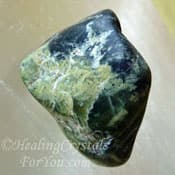
Serpentine Stone is a powerful kundalini activation stone & an excellent healing crystal. Strong earth energy that aids the healing of the earth and helps to make contact with elemental beings.
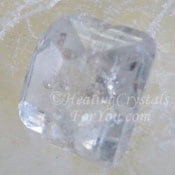
White Topaz shortens the time taken to manifest intentions and desires. It enhances creativity and stimulates psychic powers of clairsentience and clairvoyance or psychic visions. Also known as Clear or Silver Topaz.
Medical Research Council News, 28 August, 2018.
The Times recently reported on a letter to The Lancet which called for the journal to reanalyse the data from the PACE trial.
Independent scrutiny and analysis are to be welcomed in the quest for robust and reproducible research results. The MRC is keen to encourage more research into different aspects of CFS/ME because scientists still know relatively little about this serious condition.
Executive Chair, Professor Fiona Watt, responded in a letter to the Times (27 August 2018), an extended version of which appears here:
 ‘Call for review of ‘flawed’ ME research’ (The Times, 21 August 2018) discusses claims that the scientific evidence provided by the PACE trial for using cognitive behavioural therapy (CBT) and managed exercise in the treatment of chronic fatigue syndrome (CFS, also known as ME) is fundamentally unsound.
‘Call for review of ‘flawed’ ME research’ (The Times, 21 August 2018) discusses claims that the scientific evidence provided by the PACE trial for using cognitive behavioural therapy (CBT) and managed exercise in the treatment of chronic fatigue syndrome (CFS, also known as ME) is fundamentally unsound.
As funders of the trial, we reject that view: the PACE trial was funded following expert peer review, was overseen by an independent steering committee, and its published findings were also independently peer reviewed. The process through which PACE was funded, supervised and published therefore meets international standards for clinical trials.
CFS/ME is considered to be a spectrum of disorders and understanding the causes and informing the development of new treatments, or the targeting of existing treatments, will require research across a range of approaches and from a holistic view point. The PACE trial investigated the important issue of which available treatments were most likely to benefit patients, and patient consultation resulted in the addition of a treatment to the trial.
While most of the criticism focuses on the PACE trial, there is a large amount of evidence from other studies that also shows CBT and graded exercise therapy (GET) can be helpful to some CFS/ME patients. Other research groups, using different study designs, have drawn similar conclusions about the benefit of these treatments.
This evidence is summarised in three Cochrane reviews. Cochrane reviews are systematic reviews of primary research in human healthcare and health policy, and are internationally recognised as the gold standard in evidence-based healthcare.
Making the data available
One criticism of the PACE trial has been that the data is not widely available to other researchers for use in further research and to confirm the reproducibility of results.
The MRC strongly supports the sharing of data from clinical trials but it is critical that sensitive personal information from study participants is not released when study data is shared. We are currently supporting the PACE trial investigators to anonymise the study data from over 600 participants so that it can be made available to other researchers in a way that protects the privacy of those patients who took part.
The MRC has recently started (with other research funders) a pilot of a new facility for academic researchers to share data via the Clinical Study Data Request (CSDR) web portal. We hope to include the PACE trial on the CSDR portal within the next 6-12 months. This will allow researchers to apply to the CSDR Independent Review Panel to gain access to the dataset for their own analyses.
Apply for CFS/ME research funding
CFS/ME is a serious illness that is estimated to affect around 0.2-0.4% of the UK population and it remains a research priority for the MRC.
The MRC has undertaken and is actively engaged in a number of strategic activities to promote and encourage research into the causes of this condition and effective treatments, and to support the research community. Activities have included a dedicated funding call – Understanding the mechanisms of CFS/ME – in 2011.
We want to encourage a broad range of scientists, some of whom are wary of this controversial area, to apply to us for funding. At present, response-mode applications are encouraged through a cross-board highlight notice to undertake innovative research into the mechanisms underlying the chronic changes associated with CFS/ME, particularly in relation to immune regulation, pain, different symptom profiles, childhood CFS/ME and neurological inflammation.
The MRC also supports the UK CFS/ME Research Collaborative (CMRC): a platform for patients, researchers, clinicians and funders to coordinate strategies to increase awareness of the condition within the research community and increase research funding.
Helen Hyland, Fundraising Manager, ME Association.
Two very special ladies completed another adventure for ME last weekend, embarking upon a 50km walk along the South Coast from Eastbourne.
 Mother and daughter, Nikki and Brittany Onraet are no strangers to the ME Association having previously raised thousands in a football tournament and two long distance walks.
Mother and daughter, Nikki and Brittany Onraet are no strangers to the ME Association having previously raised thousands in a football tournament and two long distance walks.
They swore that their 100km walk in 2016 was their last. They’d wanted to take on something strenuous, so that they had some appreciation of how exhausted Nikki’s son, Cai, felt each and every day. And they succeeded
Cai was struck down with M.E. in June 2014 literally in the middle of a football match when he was just 14. Despite losing two years of school because of the pain, exhaustion, brain fog, nausea and insomnia, Cai has fought back.
Nikki is so proud that he managed to achieve A grades in his recent A level exams and will be off to university next month. Nikki is clear that Cai wouldn’t be where he is now without his sheer determination and the incredible support from his friends and family.
Nikki says, “It is amazing how far Cai has come, but unfortunately he is not out of the woods yet, as for every good day there’s still the chance of a bad. But continue smashing it Cai!”
This year’s South Coast Challenge is a part celebration – of Cai’s journey to date, but also of a Big Birthday event for Nikki. It’s not polite to tell a lady’s age, but the clue is in the distance…. #50for50.
Thank you both very much and we wish Cai all the best.
The ME Association
Please help us continue our work
Please donate – whatever you can afford – to help us continue with our work to make the UK a better place for people with M.E. Just click the button below to visit our JustGiving page:
Or why not join the ME Association as a member and become a part of our growing community? For a monthly (or annual) payment you will not only be helping to keep us doing what we do best, but will receive our exclusive ME Essential magazine.


Tugtupite is a rare fluorescent stone from Greenland. It reawakens lost love and unremembered passion and brings spiritual growth. The inuit say the heat of passion and deep love makes it glow red.
If you are interested in having an elastic skin, relaxed, without acne, there is nothing better than Lavender oil for skin care. Lavender essential oil will not only help you...
The post Lavender oil for Skin Care appeared first on Aromatherapy Blog.
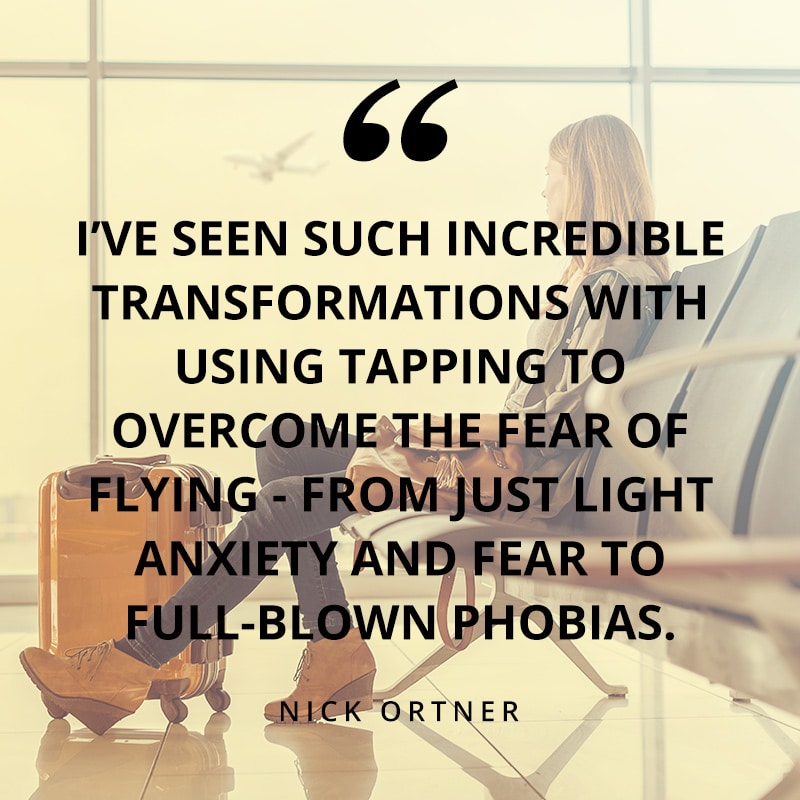 There’s ONE place where I routinely see people Tapping in public… can you guess where that is?
There’s ONE place where I routinely see people Tapping in public… can you guess where that is?
Yeah, I think the title of this blog gave it away…
It’s on airplanes!
Even though at this point, millions of people around the world use Tapping, we don’t really see it because (let’s be honest) who wants to walk around the grocery store looking like a monkey?
But on planes… with a real fear of flying, all of that goes out the window!
I’ve seen such incredible transformations with using Tapping to overcome the fear of flying – from just light anxiety and fear to full-blown phobias. (I’m looking at you Meggan… haha!)
So if you or someone you love is scared of flying, I’ve got a free Tapping Meditation to help you get started on alleviating that fear.
It’s my gift for you today because I want to see more people tapping on planes while listening to this meditation. 
And I’ve made it available for you to download and keep, so you can have it on your phone when you need it most.
(I’ve also included the transcript if you’d rather read and tap along.)
And please do let me know of your experience with this meditation.
If you’re new to Tapping, and realize that NOW is the best time to get started, (and get over this fear of flying!) you can learn the basics in minutes here.
AND… my NY Times bestselling book, “The Tapping Solution” goes into even more detail on this topic and tells the story of Meggan, who I mentioned above. So if you haven’t already, you can pick up your copy here.
Until next time…
Keep Tapping!
Nick Ortner
P.S. Make sure to share this meditation with anyone you know who has a fear of flying. They’ll forever thank you for it!
The post Tapping Meditation: Releasing the Fear of Flying appeared first on The Tapping Solution.
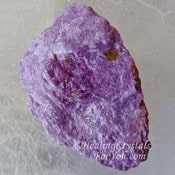
Stichtite aids kundalini awakening, creates a shield of protection around the body. Helps emotional healing, aids relationships, assists healing related to the brain and spinal column


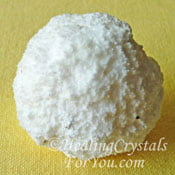
Mordenite aids concentration, brings peace and harmony, attracts abundance. Use in meditation to help still your mind. Also relieves depression, aids release of negativity & helps to prevent sarcasm.

Discover Shiva Lingam stone, sacred stone of Hindu religion. A powerful kundalini activation tool to stimulate the energy system of the entire body. Improves overall health and well being. Stones in this shape have been worshiped by devotees for many centuries.

Discover the Birthstone list for each month of the year. See Birthstone Chart with your months birthstone including ancient, modern and traditional birth stones, pictures and meanings of birthstones.
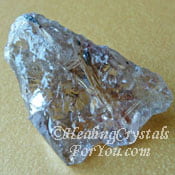
Golden Rutilated Quartz amplifies your thoughts, helps you identify your desires. Brings the power of intention to manifest, boost creativity, aid contact with the Divine mind for Divine inspiration.



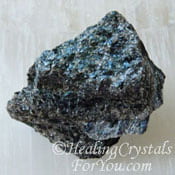
Holmquistite stone relieves stress and anxiety brings you up emotionally if you're feeling in low spirits. Good healing energy for the earth and also for healers to use, as it tingles near an energy blockage.
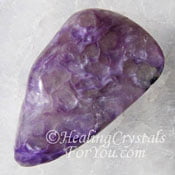
Charoite Stone protects you from psychic attack and strengthens your connection with the Supreme Being. Learn about this wonderful stone for healers who want to be of service to others.
By Ingrid Torjesen, BMJ News, 22 August 2018.
Over a hundred academics, patient groups, lawyers, and politicians have now signed an open letter to the Lancet calling on the journal to commission an independent reanalysis of the data from the PACE trial—a study into treatment for myalgic encephalomyelitis (ME)/chronic fatigue syndrome (CFS), which it published the results of in 2011.(1)
The PACE trial showed that adding cognitive behavioural therapy and graded exercise therapy to usual specialist medical care moderately improved outcomes for people with ME/CFS but that adding adaptive pacing therapy was of no benefit.
 The open letter—the signatories of which include academics from UCL, the London School of Hygiene and Tropical Medicine, Harvard, Berkeley, and Stanford—points out that the trial had “major flaws” and “unacceptable methodological lapses.”
The open letter—the signatories of which include academics from UCL, the London School of Hygiene and Tropical Medicine, Harvard, Berkeley, and Stanford—points out that the trial had “major flaws” and “unacceptable methodological lapses.”
For example, 13% of the participants qualified at baseline as “recovered” or “within the normal range” for one of the study’s two primary measures (self-reported physical function) but were still considered to meet the CFS criteria to enter the study.(2)
A five year battle by Australian patient, Alem Matthees, succeeded in getting Queen Mary University of London to release the original trial data under the UK Freedom of Information Act.(3, 4)
A preliminary reanalysis of that data (5) concluded that the previously reported recovery rates were inflated fourfold and that the recovery rates in the cognitive behavioural therapy and graded exercise therapy groups were not significantly higher than in the group that received specialist medical care alone.(6)
The £5m (€5.6m; $6.4m) publicly funded PACE trial has had widespread influence on research, treatments prescribed, and medical and public attitudes towards the illness. On its publication patients expressed anger because they thought that it suggested that ME/CFS was all in the mind and could be cured by cognitive behavioural therapy and exercise, when in fact some patients reported that such treatments caused them harm.
In 2016, Simon McGrath, who has a biochemistry degree from the University of Oxford and is unable to work because of ME/CFS, wrote a blog for The BMJ arguing that the PACE trial shows why patients need to scrutinise studies about their health.(7)
Academics are now voicing concerns about the trial, he wrote, but “for many years, researchers and the medical establishment would not engage with patients who made the same criticisms—simply because, it seems, they were patients.”
Ten members of UK parliament are among the politicians who signed the open letter, including Carol Monaghan (Glasgow North West), who predicted during a debate in February that “when the full details of the trial become known, it will be considered one of the biggest medical scandals of the 21st century.”(8)
The Lancet was approached for comment.
Several ‘Rapid Responses’ to the above article have since appeared in the BMJ online. Here are a selection:
1. Please do not misunderstand patient views
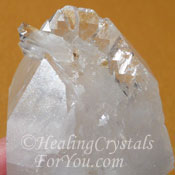
This page is part 2 of specific quartz configurations and formations. See ways crystals naturally occur in the earth and learn the advantages of using these crystal forms and how they enhance healing and spiritual growth.

Were you born under the Virgo sign? It is fortunate that Virgos are both good decision makers and intelligent as well. You can discover birthstones for your sign, if you combine your analytical approach that Virgos are known for, with your intuition, you will make a good decision about the right birthstone for you.

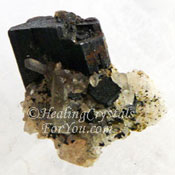
Babingtonite is an ascension stone that aids communication and helps with past life work. Use at the throat and heart chakra to aid healing.
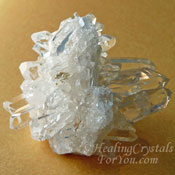
Read about Quartz Formations and the way crystals are configured. The benefits for healing and spiritual growth are explained and you can learn to identify specific configurations.

Discover Green Selenite, unusual quite rare and beautiful crystals. They have a lovely congenial vibration that encourages friendship and helps you to adapt to change.

Discover the chakra meanings and location of the seven major chakras. Read about minor chakras and find out how chakra stones effect the human energy field, and these energy spirals or vortexes.
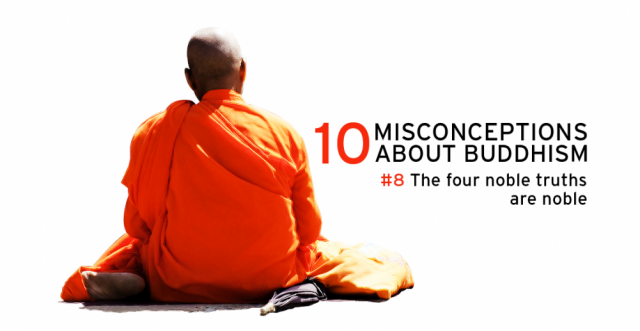
[This article is part of the 10 Misconceptions about Buddhism series]
The four noble truths—that existence is suffering (duhkha), that suffering has an origin (samudaya), that there is a state of the cessation (nirodha) of suffering, and that there is a path (marga) leading to that state of cessation—is the most famous of all Buddhist doctrines. It is the first thing that the Buddha taught—the content of his first sermon, or in the language of the tradition, what he explained when he first “turned the wheel of the dharma” (dharmacakrapravartana)—after concluding that the enlightenment he experienced under the Bodhi tree could be comprehended by others.
The “four noble truths” is the one phrase that most people know from Buddhism, the one thing they remember from their “Introduction to World Religions” course. Unfortunately, it is a mistranslation.
Related: 10 Misconceptions about Buddhism
The key term is “noble.” The original Sanskrit term arya—adopted by the Nazis as the centerpiece of their racist ideology—was in ancient India an ethnic self-designation used by inhabitants of north India (whether they were invaders, migrants, or natives remains a topic of scholarly debate) to distinguish themselves from other inhabitants of the region. The Buddha reinterpreted the word, which means “noble” or “superior,” from an ethnic designation into a spiritual one, referring to those with an insight into reality superior to that of ordinary people.
It appears that arya became a technical term early on in the tradition, referring specifically to four stages on the path to nirvana, or more accurately, to those who have reached those stages: the four noble persons (aryapudgala).
The first of the four are the stream-enterers (srotaapanna), those who have had an initial insight into the nature of reality, such that they have destroyed all causes for future rebirth as an animal, ghost, or in the hells, and who are destined to enter nirvana in seven lifetimes or less.
The second are the once-returners (sakrdagamin), who have deepened that insight, such that they will only be reborn in our world, the sensuous realm (kamadhatu), once more.
The third are the never-returners (anagamin), who have deepened that insight further so that they will never be reborn in our world again, but will achieve nirvana in “pure abodes” (suddhavasa) at the upper reaches of the heavens of the realm of subtle materiality (rupadhatu).
The fourth type of noble person are the worthy ones or arhats, who have destroyed all causes for future rebirth and will never be reborn again, entering nirvana at death. The Buddha passed through all four of these stages on the night of his enlightenment, becoming an arhat.
Thus, the term that we know as the “four noble truths” should really be translated as the “four truths for the [spiritually] noble.” The truths themselves are not noble; the people who understand them are. And it is the understanding of these truths that makes them noble. Another translation might be the “four ennobling truths.”
Related: What’s So Noble About the Four Noble Truths?
There is an important teaching in this term: the four truths are not true for everyone. Anyone who has not achieved at least the level of stream-enterer is called an “ordinary person” or “common being” (prthagjana)—sometimes also called bala, meaning “childish” or “foolish.” We ordinary persons are foolish because we don’t know the truth.
Specifically, we don’t know that existence itself is suffering, that suffering has an origin, that suffering can be brought to an end, and that there is a path to that state of cessation. We may know it intellectually, we might know it well enough to list it correctly on the midterm, but this does not make us noble.
Only the person who has direct insight into the four truths is noble. And it is only for such people that the four truths are, in fact, true.
[This story was first published in 2014]
The post Four Ennobling Truths appeared first on Tricycle: The Buddhist Review.
Tom Whipple, Science Editor, The Times, August 21, 2018.
More than a hundred academics have joined ten MPs and scores of patient groups from around the world to sign an open letter calling for The Lancet to reanalyse a study into treatment for myalgic encephalomyelitis (ME).
The letter follows a debate in parliament in which one MP said that the study, which is used to set NHS guidelines, “will go down as one of the biggest medical scandals of the 21st century”.
The authors of the research paper stood by their findings and said that the letter represented a campaign to discredit solid research and force the retraction of papers simply because patients disagreed with their findings.
 The signatories, who include academics from Harvard, Stanford, UCL and the London School of Hygiene and Tropical Medicine, said that the 2011 Pace trial, which recommended therapy and exercise as a treatment for the condition, had “major flaws” and “unacceptable methodological lapses”.
The signatories, who include academics from Harvard, Stanford, UCL and the London School of Hygiene and Tropical Medicine, said that the 2011 Pace trial, which recommended therapy and exercise as a treatment for the condition, had “major flaws” and “unacceptable methodological lapses”.
The £5 million publicly funded trial was published in The Lancet and has informed advice on treating people with ME in the NHS and abroad, but is controversial among ME sufferers. Some claim that its advice perpetuates an idea that the disease, which causes debilitating disability, is all in the mind.
The Lancet declined to comment.
Virology Blog:
Trial By Error: Open Letter to The Lancet, version 3.0
Two months ago, Professor Racaniello sent Lancet editor Richard Horton an open letter about the indisputable methodological and ethical failings of the PACE trial. This was a follow-up to Virology Blog’s 2016 open letter to Dr. Horton; the new one detailed what has happened since then. Last month, I re-sent and reposted this new open letter, with organizations also signed on. Given Dr Horton’s persistent defense of a study in which 13 % of the participants had already met a key outcome threshold at baseline, it is not surprising that he has failed to respond.
Yesterday I sent the letter to The Lancet for the third time, with more individual experts and organizations adding their voices to the demand for a reassessment of the reported PACE findings. For reasons only Dr Horton can explain, he appears determined to undermine his journal’s reputation for scientific integrity with his robust support for a trial that objective observers clearly recognize as a piece of crap. PACE has caused great harm to the patient community. Dr Horton’s refusal to take appropriate corrective action has amplified that harm many times over. He and his journal have a lot to answer for.
Dear Dr. Horton:
In February, 2011, The Lancet published an article called “Comparison of adaptive pacing therapy, cognitive behaviour therapy, graded exercise therapy, and specialist medical care for chronic fatigue syndrome (PACE): a randomized trial.” [1] The article reported that two rehabilitative approaches, cognitive behavioural therapy (CBT) and graded exercise therapy (GET), were effective and safe treatments for chronic fatigue syndrome, also often referred to as myalgic encephalomyelitis, ME/CFS and CFS/ME. The PACE study received international attention and has had widespread influence on research, treatments prescribed for patients, and attitudes toward the illness of both the medical community and the public at large.
At the press conference promoting the Lancet paper, one of the lead investigators stated that twice as many participants in the treatment groups got “back to normal,” compared to those in the other study arms. [2] An accompanying Lancet commentary similarly claimed that these “back-to-normal” participants had met a “strict criterion for recovery.” [3]
In fact, we now know that 13 % of the participants qualified at baseline as “recovered” or “within the normal range” for one of the study’s two primary measures, self-reported physical function–even as they were simultaneously classified as disabled enough on the same measure to enter the study. [4] This anomaly, which occurred because the investigators weakened key outcome thresholds after data collection, invalidates any claims that patients “recovered” or got “back to normal.” The overlap in entry and outcome criteria is only one of the trial’s unacceptable methodological lapses.
The treatments investigated in the PACE trial were based on the hypothesis that ME/CFS patients harbor “unhelpful” convictions about having an ongoing organic disease and that the perpetuation of their devastating symptoms is the result of deconditioning. In contrast, a 2015 review from the U.S. Institute of Medicine (now the National Academy of Medicine), reported that ME/CFS is a complex, multi-system illness characterized by neurological, immunological, autonomic, and energy metabolism dysfunctions. [5] The cardinal symptom, noted the review, is a systemic intolerance to exertion; if patients exceed their available energy resources, they can suffer serious and prolonged relapses.
After The Lancet published the first PACE results, ME/CFS patients and advocates immediately pointed out major flaws. But few people outside the field took notice until the science site Virology Blog published a 15,000-word investigation by David Tuller, a public health researcher and journalist at the University of California, Berkeley, in October of 2015. [6] Subsequently, in February of 2016, many of us signed an open letter to The Lancet requesting an independent investigation of the study. [7]
Since then, much has happened:
* In August of 2016, a U.K. tribunal, citing that open letter, ordered Queen Mary University of London to release raw trial data from the PACE study, sought by Australian patient Alem Matthees in a freedom of information request so that he and others could calculate the outcomes promised in the PACE trial protocol. [8]
* Analyses of these data [9], including a study published in BMC Psychology in March [10], have confirmed what has long been argued: The PACE investigators engaged in such extensive outcome-switching that they were able to report dramatically better findings than the null or minimal results obtained under the original measures they promised in their protocol.
* The U.S. Agency for Healthcare Research and Quality (AHRQ) downgraded its recommendations for CBT and GET. [11] This downgrading occurred after the agency removed from its analysis the PACE trial and other studies using overly broad selection criteria that generated cohorts of patients with a grab-bag of fatiguing conditions. And while the PACE trial claimed that GET is safe, AHRQ found that the therapy was associated with more adverse events.
* Last summer, the U.S. Centers for Disease Control abandoned the recommendations that ME/CFS patients be treated with CBT and GET [12], having already removed references to the PACE trial. A couple of months later, the U.K. National Institute for Health and Care Excellence announced that it would pursue a full update of its 2007 guidance, citing concerns about the reliability and validity of the evidence base. [13]
* Earlier this year, a report from the Dutch Health Council recommended that GET should not be used in the Netherlands as a treatment for the illness. [14]
* In March, a group of leading American clinicians who specialize in ME/CFS unanimously agreed that the two PACE treatments are inappropriate and possibly harmful for patients with the illness and should therefore not be prescribed. [15]
Given the worldwide impact of PACE, we urge The Lancet to do what the open letter two years ago requested: commission an independent re-analysis of the individual-level trial data, with appropriate sensitivity analyses, from highly respected reviewers with extensive expertise in statistics and study design. The reviewers should be from outside the domains of psychiatry and psychological medicine and predominantly from outside the U.K. They should also be completely independent of, and have no conflicts of interests involving, the PACE investigators and the funders of the trial.
Thank you for your quick attention to this matter.
Sincerely,
For the full list of signatories please refer to virology blog. Dr Charles Shepherd and Dr Nigel Speight, medical advisers to the ME Association, together with the Countess of Mar, representing Forward ME, also signed the letter.
The UK Members of Parliament who signed were as follows:
Sir Edward Davey MP
Kingston and Surbiton, England, UK
David Drew MP
Stroud, England, UK
Patricia Gibson MP
North Ayrshire and Arran, Scotland, UK
Mary Glindon MP
North Tyneside, England, UK
Sandy Martin MP
Ipswich, England, UK
Carol Monaghan MP
Glasgow North West, Scotland, UK
Nicky Morgan MP
Loughborough, England, UK
Alex Sobel MP
Leeds North West, England, UK
Graham Stringer MP
Blackley and Broughton, England, UK
Stephen Timms MP
East Ham, England, UK


Healing frequencies to align your chakras (also for spiritual awakening!) - Many FREE audios to try!
Learn more & get the free app at http://onelink.to/pjmmu7 😀😀
Now available for Android phones!
By Andrew J Kewley, Student, South Australia.
This editorial stated “On its publication patients expressed anger because they thought that it suggested that ME/CFS was all in the mind”.
In anticipation of any future comments about this, I’d like to point out that this is a mischaraterisation of patient views. I have communicated with a quite a number of patients who are critical of the trial in question and none of them were angry because “it suggested thats ME/CFS was all in the mind”. I don’t know where this view comes from, but it seems to be a misunderstanding of patient views.
Patients were angry that the results of the trial were excessively spun, and that much of the outcome measures specified in the protocol were not reported in the manuscript published in The Lancet. In particular, the thresholds for “positive outcome” and “recovery” were heavily watered down such that they were no longer meaningful.
One of the major criticisms by patients was that the “recovery” (remission) criteria as described in the protocol was not used and in its place, a highly questionable and misleading criteria for “normal” function was used instead. This criteria was used to imply recovery in one of the associated editorials published at the time of the original manuscript.
The criteria for “normal” functioning in the trial was defined as a SF-36 physical function score above 60. A SF-36 physical function score of 60 is less than the 15th percentile of the overall population of men/women that were of the median age enrolled in this study. The median and mode for mostly healthy western women of this age is somewhere around 95/100. Since patients were screened for other conditions that would affect their physical functioning, one would expect far higher scores to be considered recovered.
The most strange aspect however was the entry criteria required a score lower than 70/100. Which is to say according to the thresholds used in the PACE trial, you could simultaneously be considered ill enough to participate and well enough to be considered recovered with the same score of 60/100.
The reanalysis by Wilshire et al. analysed the data as close as possible to the original protocol, given the data they had access to. they discovered that on the contrary to claims made by the authors, there was no difference in recovery rates between the randomised groups.
This lack of recovery from such treatments is much more in line with patient community experiences with these treatments. Namely that they might be useful for a minority of patients to manage living with a chronic illness more effectively, but that they should not be considered primary treatments that lead to remission.
This example is potentially a textbook example of how pre-publishing clinical protocols is important and how deviation from that protocol is used in an attempt to exaggerate the efficacy of an intervention in a clinical trial.
2. Re: Pressure grows on Lancet to review “flawed” PACE trial
By Jonathan CW Edwards, Professor in Medicine, Emeritus, UCL, Rayne Institute, 5, University Street, London WC1
Kewley (previous comment) makes the key point. The reason why I have signed the letter to The Lancet is that the PACE trial is methodologically so poor as to be uninterpretable.
Patients may have expressed concern that the trial inappropriately reinforces psychological theories but this seems to have been used as a smoke screen by the PACE authors and associates to obscure the fact that patient scientists have identified the flawed nature of the trial.
I have no personal or professional interest in ME but have been greatly impressed by the ability of ME/CFS patients to initiate the sort of critical review that should have been performed by peers.
The reason why the poor quality of this trial is now so important is that this sort of poor methodology, based on unblinded trials with subjective outcome measures, is widespread in the field of therapist-delivered treatments.
A house of cards has been built that will ultimately collapse as it emerges that the same results can be obtained with any form of treatment that deliberately aims to influence patients’ judgement of their health status.
By Michael Sharpe, Professor, PACE trial team, University of Oxford, University of Oxford Department of Psychiatry.
This ‘news item’ refers to a three times recycled letter that has been repeatedly sent to the editor of the Lancet journal by campaigners, about a study that was published in 2011. [1]
The study was a clinical trial which found that cognitive behaviour and graded activity therapies in addition to medical care were better treatment for patients with chronic fatigue syndromes (CFS) than either a form of pacing therapy or medical care alone. However these findings were not well-received by some, including the main authors of the letter referred to. They have long campaigned to stop research into such treatments for people with ME/CFS and to get published studies, such as this one, retracted.
The trial referred to in the letter was subject to rigorous monitoring whilst being done and extensive peer review before being published. Furthermore, and unusually, because of the campaign against it, has been subject to a number of further reviews after being published, all of which have found its conclusions to be sound. Although it is the largest trial to test these therapies, it is not the only one; other studies have also found cognitive behaviour and graded activity therapies to help patients.
Science does not progress by campaigners trying to stop research being done or by suppressing its findings, simply because they are unwelcome. Science works best by testing ideas by doing experiments and then seeking either replication or refutation of the findings; the PACE trial findings have so far been replicated a number of times. We look forward to them being subject to further testing by other researchers in future.
Click for more rapid responses…